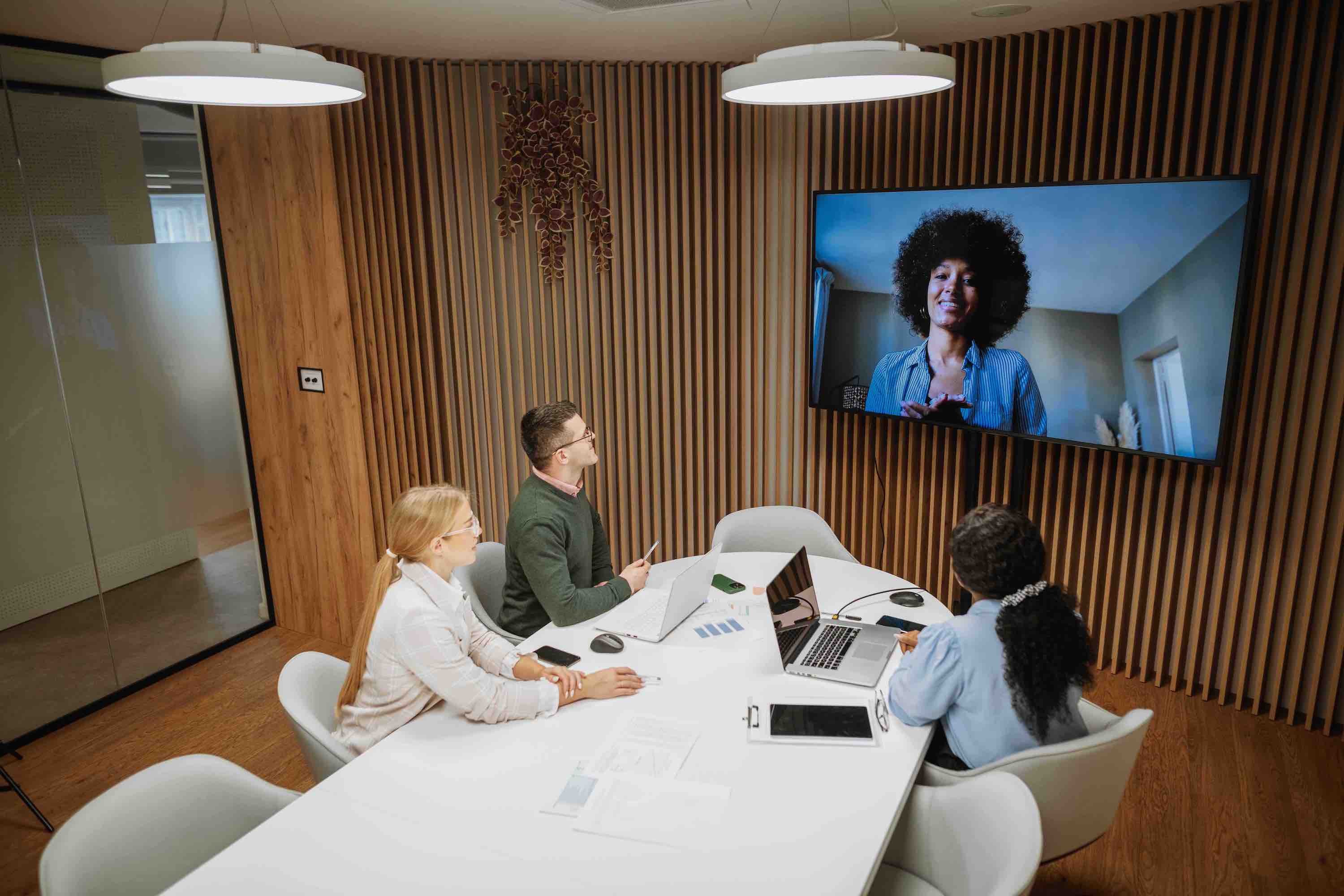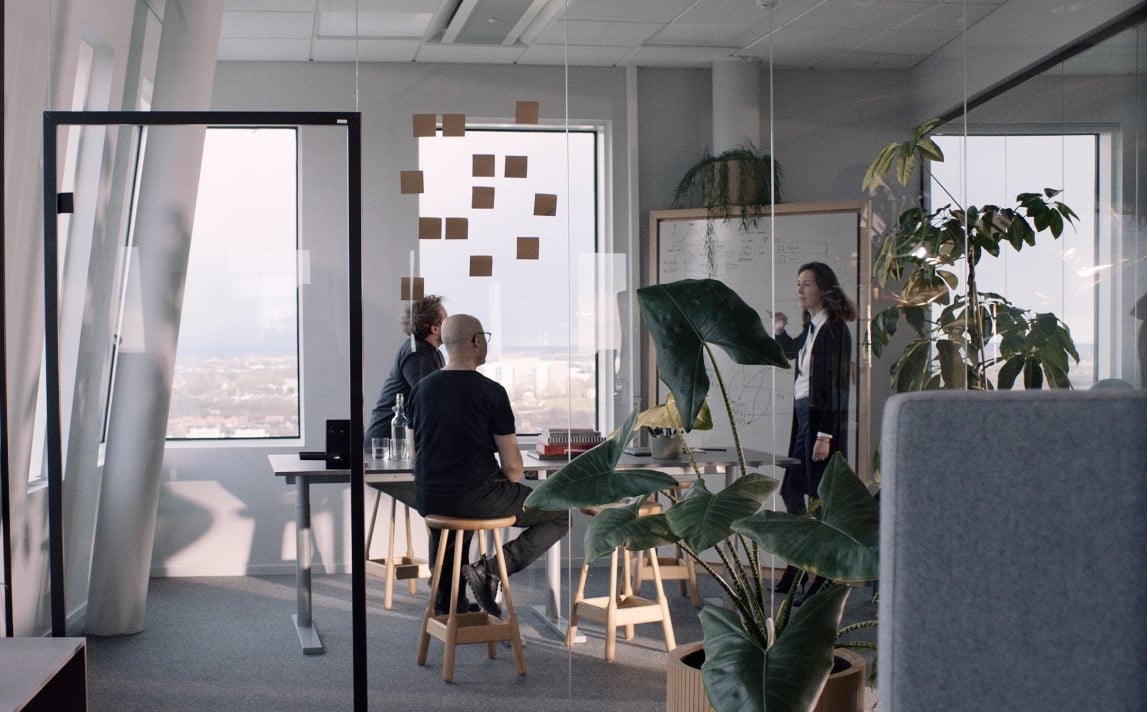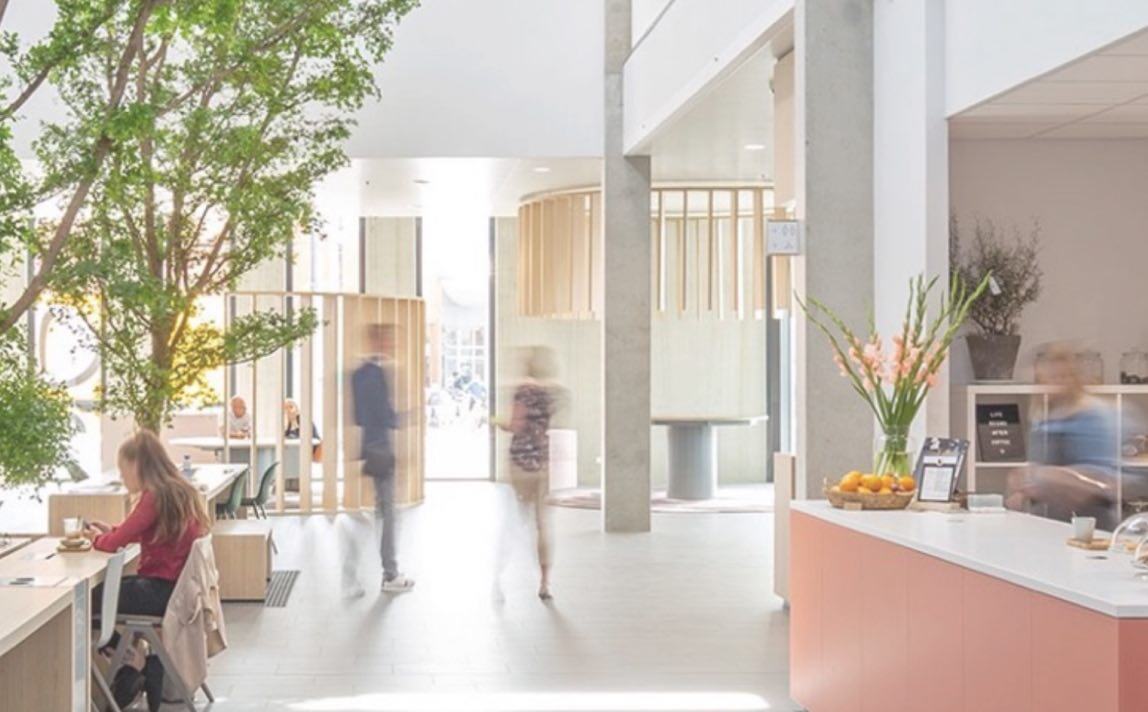What’s different about work today? How do companies adapt? To find out, we sat down with a senior workplace strategist who has observed this emerging reality for decades.

Neil Salton is the founder and managing director of ChangeWorq. He offers workplace strategy and change management to a wide range of clients in Singapore and Asia more broadly, and is a public speaker, commentator, and educator on these topics as well.
Thank you for joining us today, Neil. With such a high level of expertise, you seem like the perfect person to ask: Why are so many companies today struggling with their offices?
That’s a great question! And certainly one that senior business leads are asking. But to answer it, we need to take a step back for a second, because it’s actually more fundamental than just an office problem. The real question is: “What’s going on with work itself?” That I think, gets us closer to the heart of the problem. And that’s why I like to break down what work actually is, which is a combination of solo and group activities.
Of course there’s solo work that requires deep, undisturbed focus. Plenty of research talks about “the flow”. When you get into “the flow”, you're thinking clearly. You’re checking things off your list, one by one. Then there is solo work that isn’t deep work, with some level of social interaction. Let’s say you’re working by yourself, but suddenly a colleague has a question you can answer. This saves them time, but the interaction might even benefit your own tasks.
Then there’s group work. The kind everyone thinks of first is planned and scheduled group meetings. That’s when two or more people arrange to be on a call or meet at the office. There’s also another type of group work, which is that whole spontaneous, ad hoc, informal collaboration where people suddenly discover a need to work together, to explain something, or to share ideas quickly.
"Hybrid work has shifted how and where we do each of these four modes of work."
The reason all this matters, is that hybrid work has shifted how and where we do each of these four modes of work. Many companies are realizing that when people do come to the office, they’re doing it differently than they did before. And this is where today’s office challenges start, since it probably goes without saying that these four modes of work require different types of spaces.
What organizations have to do today is actually figure out how they work. The task of a workplace strategist is to ask questions like: What is the balance between these four modes? What are the kinds of spaces that are missing? How do you design them effectively in the building that they may be moving to or want to renovate?
Many clients I work with think the answers are very straightforward at first glance. But in reality, they make a lot of false assumptions. And once they start getting a good baseline of measurements, and talking to the people who use the spaces, they always discover surprises. It's my job to expose these surprises, and help them adapt to a whole new spectrum of new work settings.
That makes sense. Companies and office spaces have to adapt if their work modes change, or they happen in different locations. But what’s behind all these changes?
Well to start, we’ve all just participated in the world's largest work-from-home (WFH) experiment. Unwillingly, of course. But now, a huge number of people have realized that they can work from a location other than an office. Not only that, but many also realize they actually quite enjoy it, because they have a degree more autonomy. People now have the opportunity to modulate their working days. For example, pick your kids up from school in the afternoon and come back, spend some time with them, feed them, and then do a little bit of work later. It doesn't mean you're working more hours. You should be working the same number of hours. They're just distributed in a different way.
And by the way, before the pandemic, it wasn’t at all obvious that this model would work. The Asian context is a great example of this. If you live in Japan or in Hong Kong, for example, home sizes are typically a great deal smaller than in the U.S. or in Europe. You may also live in the same home as extended family members, maybe even with a helper. All this congestion meant everyone had major concerns. But today, I’ve found that most people realize, “Oh wow, I actually can do my work, even if I didn't think I could.”
It was a sudden flip, for both employees and employers. For instance, companies that weren’t already providing good technology were forced to do so overnight. Even in Singapore, as relatively advanced as we are, companies were scrambling. So many people didn't even have laptops, just desktop PCs. It really was quite a shock. Adjustments were necessary at a societal, organizational, familial, and individual level. And it was greatly enabled by technology.
"I've been saying that the pandemic finally dragged everyone into the 2010s, not the 2020s."
I've been used to the WFH model since 1996, so until the pandemic, I didn’t realize so many organizations were that far behind. I've been saying that the pandemic finally dragged everyone into the 2010s, not the 2020s. There was a remarkably high number of people who actually didn't know how to conduct a Zoom call, or a Teams call. Even my web developer at the time said, “Oh, so what's a virtual call? What do we do?”
The last few years flipped a switch in people’s minds. And companies have already made significant adjustments. But why isn’t this new way of working fully embraced yet?
A lot of employees recognize the benefits. But that's not the full story, because there are some people who don't function well working from home. Some people might just prefer to get out of the house. Some people just can't work from home because of their job requirements. There are other people who can't work from home because there's simply too much going on. So a new workplace has to recognize all of those things, and offer an environment that suits all types of people and job roles.
There are important challenges for managers too. Managing people who aren't in your line of sight is an art form. And unfortunately, the shift to WFH has left many managers in a bit of trouble because no one had coached them about how to deal with the difficulties. That’s where someone like me can help. When I talk to clients, I like to use a personal example. Today I have two colleagues in my team. I literally have no idea where they are now. They're probably in Singapore, but one of my colleagues, she's keen on photography. She often goes over to Thailand, and she'll drop me a note saying, “I'm going to Thailand, but I'm still working.” I respond with, "That’s fine, have fun,” because I ultimately only care about outcomes and deliverables. That's the thing that really matters.
To manage successfully in the WFH mode you have to make sure that everyone in your team understands and respects not just what the deliverables have to be, but the level of quality and the time by which they're expected to be produced. And while it's not a particularly difficult concept to explain, if you’re used to a much more top-down, hierarchical, command-and-control mode, it can be quite challenging to adopt. Not impossible though. With the right coaching it’s possible, and especially when you align not only managers, but technology teams, real estate people, and the HR departments with a new way of measuring success and managing people.

What’s on the horizon to overcome these challenges and make the most from WFH?
Since most companies are just about catching up when it comes to individual employee technology that makes WFH possible, the next steps are more about the infrastructure that can make these new ways of working smoother and less complicated. I think this is an untapped area for the vast majority of companies. And I think this is where a solution like Nimway, as an example, comes into the picture, which can remove day-to-day frictions that are common in hybrid workplaces.
But maybe more importantly, this sort of smart office infrastructure helps property and facilities team actually understand what’s going on in their buildings. For instance, they get objective measurements about their company’s unique balance of work modes. While it can vary greatly between companies, and have different nuances, there is a general trend.
If we imagine a pie chart showing the distribution of spaces for solo work and group work, the slices representing group work and social areas are growing, and the pie chart as a whole is shrinking. More collaborative spaces, and for some clients, less office space. It’s a “new normal”. In 2023, my own measures of occupancy rates in Singapore and Hong Kong offices started to flat-line around 60%, which is less than my pre-pandemic average measurements of around 75%.
What I do when working with senior leadership is that I have them think about their story of work. I get them to ask important questions. What does it mean to work for this organization? What do you do when you work here? What do people need when they come into your office?
"There must be, in my opinion, a conversation about purposeful work."
Elsewhere, it’s common to hear leadership just ask, “We should be getting people back into the office, right?” Even if they’re uncertain, many companies throw money at it by offering all kinds of free food and events and things like that. Fun incentives are definitely a good thing to have. But I don't think it should be the driver of your workplace strategy. There must be, in my opinion, a conversation about purposeful work.
From calendar systems to indoor climate, a few big changes are on the horizon.

Occupancy sensors can answer common questions about workplaces.

3 types of occupancy data ranked from least to most valuable.

Copyright © 2025 Sony Network Communications Europe. All rights reserved